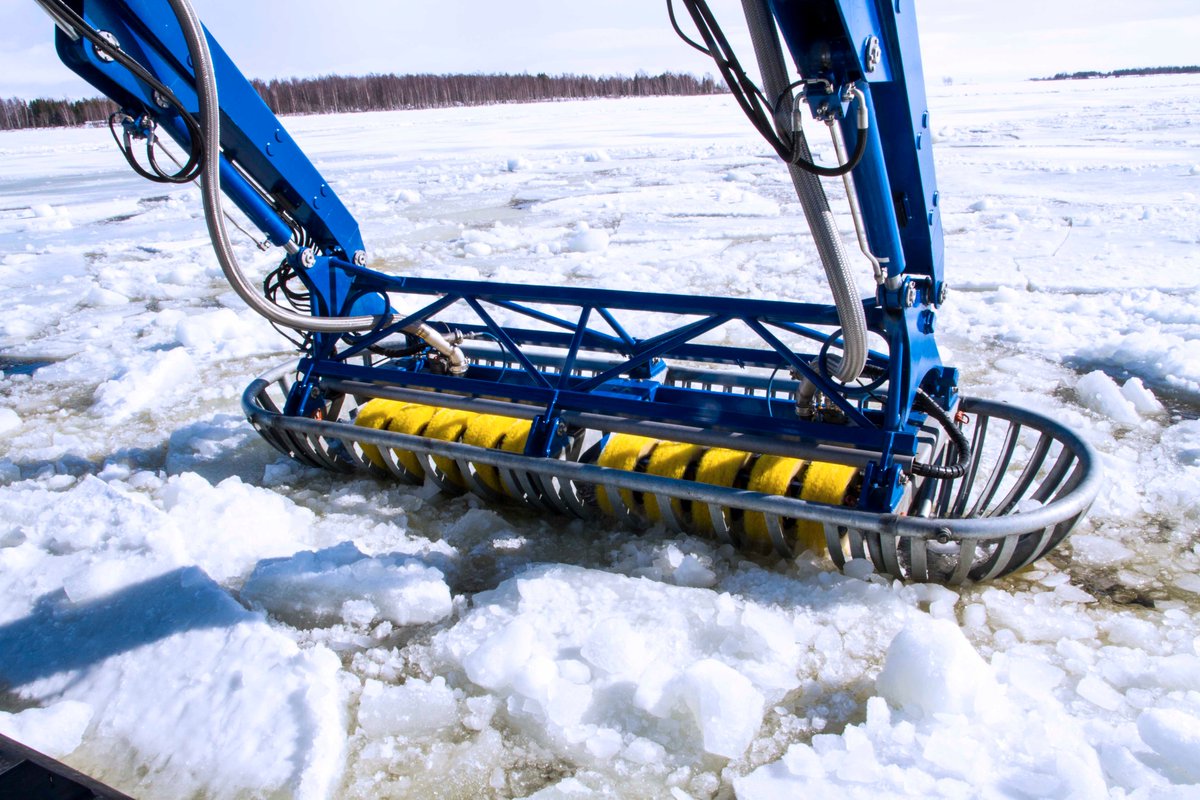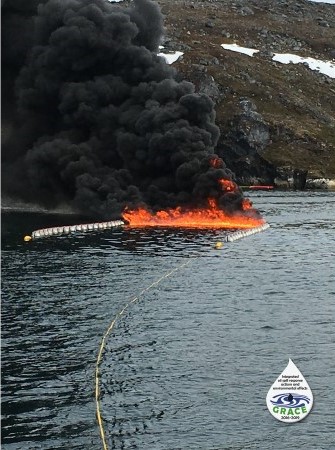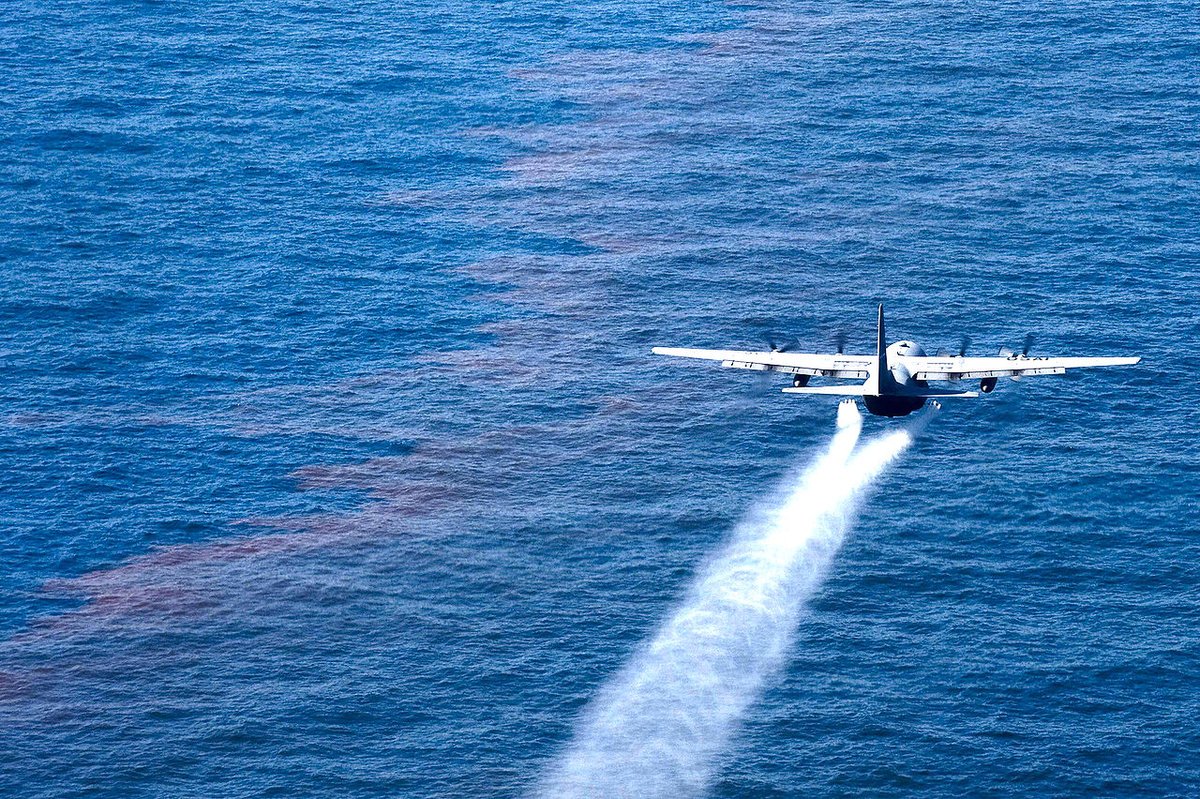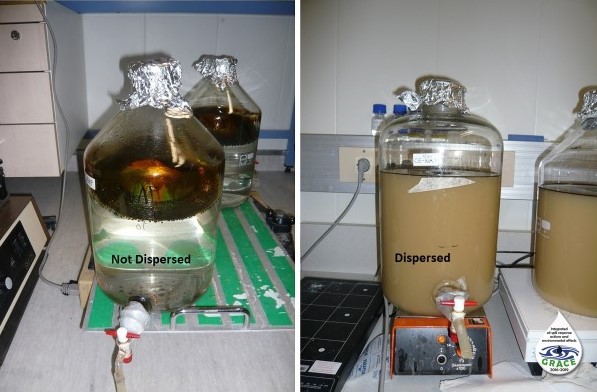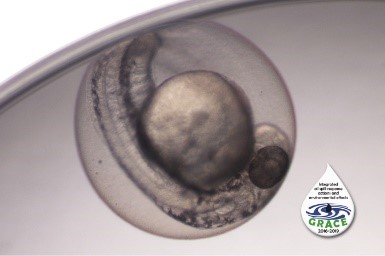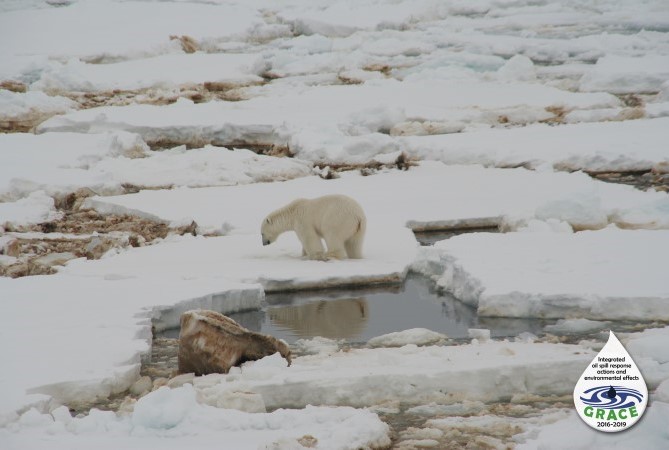1/10 Due to #climatechange shipping routes are opening up in the Arctic. The risk for accidents and oil spills increases. Furthermore, offshore oil and gas exploration in the Arctic causes a risk for accidents. #arcticshipping #APP4SEA2020
2/10 Mechanical oil spill collection is the most commonly used method used for combatting oil spills. The method uses oil skimmers with rotating brushes, @LamorCorp also developed some for use in ice. In remote areas in the Arctic availability may be restricted. #APP4SEA2020
3/10 In situ burning of oil on the sea surface may be a good and sometimes the only option in remote areas. Before burning the oil must be boomed using pyrobooms. Ignition is done from a dinghy or from helicopter. #APP4SEA2020 #GraceOilProject http://www.grace.oil-project.eu"> http://www.grace.oil-project.eu
4/10 Burning residues after in situ burning were found to have temporary impacts on the biota in a controlled field experiment in Greenland carried out by the #H2020 #GraceOilProject. See video . https://www.youtube.com/watch?v=51ieM7h7ykM&feature=youtu.be">https://www.youtube.com/watch...
#APP4SEA2020 https://www.youtube.com/watch...
#APP4SEA2020 https://www.youtube.com/watch...
5/10 Chemical dispersants break up the oil film and dissolve the oil into the water column. Special equipment is needed for spreading of dispersants from vessels or aircrafts. Dispersants were used in the #DeepwaterHorizon accident and it reduced stranding of oil. #APP4SEA2020
6/10 The dispersed oil is not collected, it remains in the sea. Dispersed oil causes toxic effects on biota in the water column. @RWTH, @NTNU and @pie_upvehu and @SYKEint studied this in the #GraceOilProject. More research is needed in cold conditions. #APP4SEA2020
7/10 Oil that is not collected or burned slowly starts to degrade biologically in the marine environment. In Arctic conditions the degradation is slow. The lighter fraction of oil will degrade faster. Non-removed oil and dispersed oil may end up in the sea bottom. #APP4SEA2020
8/10 Oil spill response is done to avoid smothering of birds and mammals, but also to diminish direct toxic effects of oil on biota in the seawater and bottom. New results by @RWTH show that crude oil affects the eye development in fish http://www.grace.oil-project.eu"> http://www.grace.oil-project.eu #APP4SEA2020
9/10 A novel Environment & Oil Spill Response (EOS) analytical tool for environmental assessment to support oil spill response design was developed in the #GraceOilProject by @AarhusUni and is available at http://bios.au.dk/index.php?id=128153&L=1">https://bios.au.dk/index.php... #APP4SEA2020
10/10 In order to deal with oil spills in the Arctic we need all methods available. It would be irresponsible not to be prepared. @EPPR_Arctic #APP4SEA2020

 Read on Twitter
Read on Twitter
